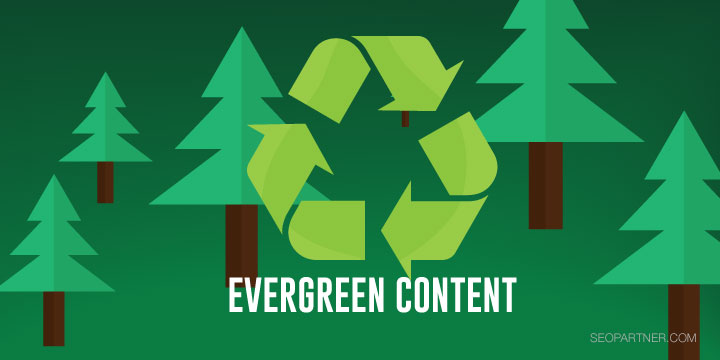Want to dramatically improve the results you’re currently getting? Maybe it’s time to shake things up. See things from a new perspective. Try a different path.
That’s the main reminder we got from the SEO tips, news and updates we came across this week. From time to time, try to change the way you see and approach things – it’s amazing (and always surprising) how much insight you can gain from that shift.
This approach works for any endeavor you’re working on. It certainly works for SEO, where drastic changes happen all the time, and businesses and marketers need to be always on their toes for new developments.
See, “bad” here doesn’t mean evil or shady. It simply refers to using not-so-conventional approaches when doing proven SEO practices.
Here are five moves that are seemingly so bad, they’re actually good for SEO.
STEAL FROM TEACHER
*Use teaching techniques to improve your content.

Images thru Fox
One way to improve yourself as a marketer is to look back at the lessons you learned at school. Particularly: the techniques your teachers used to manage and communicate with you and the rest of the class.
The following tips from Quicksprout allow you to step into the shoes of a teacher and utilize teaching techniques to help improve your content writing.
Build desire
One of the best ways to catch the attention of students, and by extension, your readers, is to use the desire method. The desire method focuses on what the benefits are for the student/reader.
Make it fun
Gamifying your content offers two advantages – it makes your content fun and it makes your content shareable.
Identify pain points
If people are naturally drawn to benefits, they are also naturally averse to things that cause them pain. In content writing, you can frame your article in such a way that you highlight what would happen to the reader if he does not follow what has been laid out.
Make it memorable
It is not enough to capture the attention of your student/reader. You should make your content easier to remember by using subheadlines and shorter paragraphs.
Create multiple forms of content
People learn differently. Some learn by seeing, others by hearing and others by touching. Cover all your bases by using multiple forms of content for a single subject.
Keep your readers engaged
Apart from gamifying your content, you can tweak your writing style as well as the topics you write about in order to engage with your readers.
SWEET-TALK THE SEARCH ENGINES
*Make your non-textual content accessible and better optimized.

Images thru Fox
Do you publish non-text content on your website and online assets? That’s great. But they need to be optimized and made readable for search engines to recognize them.
According to Moz, here’s how you can make features such as images, animations, graphical buttons, infographics and captchas more accessible to web users and more effective for your SEO:
For images
– Use image alt attributes to tell search bots what the image is.
– Add image captions to makes it easy for Google to provide context for images and contribute to rankings.
For infographics
– Use an ARIA (Accessible Rich Internet Application) attribute called “describedby” to deliver a long description of the infographic.
For online videos
– Add transcriptions for videos to help hearing-impaired web users understand the media.
– Embed subtitles and captions for videos to provide the dialogue, identify the speakers and describe the sound effects.
LET “OTHERS” DO THE WORK
*Find the right SEO specialist to hire.

Images thru Fox
So you’ve finally decided to ditch your DIY approach. You’re getting an expert to manage your SEO for you.
Whether you’re looking to hire an in-house SEO specialist or to outsource your SEO needs, it pays to go for the someone who can really get you the results you need.
Searchmetrics lists some of the key qualities a good SEO specialist should have:
Knowledge and proficiency in all areas of SEO
The best SEO specialists should be knowledgeable and highly-skilled in analytics as well as in technical, on-page and off-page SEO.
A good understanding of how SEO, social media and content marketing work together
SEO, content and social media marketing are all now connected to each other. SEO specialists that get results are well-versed in all three areas.
Relevant experience and a good track record
SEO specialists today need extensive search engine optimization experience. Work with those who have done successful SEO campaigns preferably for businesses in your niche or industry.
Capability and initiative to regularly track and share results
Choose an SEO team that can consistently track rankings, performance and SEO visibility – and has a system of reporting these results. The ability to analyze all that data and make recommendations based on it is important.
Local SEO experience
The specialist you hire should be knowledgeable in local SEO. Experience in local SEO techniques such as location-based keyword research, local reviews and building relationships with local publications is a must.
EAVESDROP
*Grow your business using remarkable brand listening techniques.

Images thru Fox
Social media is a great platform for creating valuable conversations with your customers. And as good conversations go, listening is as important as sharing your message.
Social listening is a way of keeping tabs with what your customers are saying. It entails tracking the industry based on specific search strings and keywords, monitoring customer views for competitors and knowing what your customers or future customers are looking for.
To help you grow your business, SEMrush shares are some of the most remarkable brand listening techniques to use:
Monitoring competitors
Figure out the topics your competitors are sharing, the content styles that bring the highest engagement for them, how often are they posting and the influencers they are connecting with. You can use brand monitoring tools to handle this and automate the activity.
Delivering top-notch customer service
Satisfied customers can easily connect you with their own network. Hootsuite, Respond by Buffer and TweetDeck by Twitter are some of the top tools that connect you better with customers and new leads.
Driving lead generation
Share content. Actively participate in casual conversations with prospective clients. Provide suggestions and answers to related problems of your target audience. Tools such as BuzzSumo and TweetReach can help you keep these connections going.
Generating ideas for new products and co-creation
Throughout your product life cycle, social media will come in handy. It can help you from generating new ideas to new product development to launch and post-launch support. To handle all these with ease, you can use different hashtags and search functions using native analytics on Instagram and Twitter.
Finding advocates, partners and employees
Engaged consumers are your top brand advocates. You can use regular social media management tools to answer, connect and interact better with your community on a regular basis. Your calls-to-action should be engaging, clear and compelling.
RULE THE ‘HOOD
*Know the key features to win the local SERPs game.

Images thru Fox
Local search ads can help you drive more online and offline conversions. If you want to be competitive, get to know Google’s new local search ads and learn how to connect with local consumers.
Search Engine Journal details in this article the important points you need to know about leading in the local SERPs:
Why do local businesses need to reconsider visiting local search ads?
Relevance – get better ROI by reaching your target location or groups.
Less competition – the chances of appearing on Google Maps is greater when you get more specific with your geographic location. You may even target by time, allowing you to determine not just where your ads will be posted but also when.
Higher clicks and conversions – With targeted ad placement, you’re reaching out to users who are more likely to convert into consumers.
To be eligible for local search ads on Google Maps, you need to:
- Set-up a Google My Business account.
- Have your active Adwords account ready.
- Sync the location extensions together.
To run a successful local search ad, make sure to consider the following:
Identify your goal.
Sample questions to ask before getting started are: Do I want to grow new orders? Or, do I want to increase market share?
Optimize your Google My Business.
Verify and correct any information such as your local phone number and address. Be as specific as possible when identifying your category. Build citations to your page.
Turn on location extensions (address, phone numbers, hours of operation and star ratings) in your search ads.
Google will include a link to your ad that provides mobile-oriented directions to your business.
Target a specific location.
Google allows you to adjust bids to target users (who are searching for one of your keyword terms) located near your business.
Use locally targeted keyword terms.
Start with broad keywords at the start of the campaign, fine-tuning them as you gather more data later on.
SUMMING IT ALL UPFor this week’s SEO news roundup, here are 5 proven, offbeat, “so bad it’s good” moves to improve your SEO:
|
And here’s our challenge to you, in three easy steps:
- Choose one action item – just one – from that list (Of course, it has to be relevant to your business and target market).
- Focus on applying that one item to your campaign.
- That’s pretty much it.
Lastly, we prepared a printable infographic, for your reference and inspiration. 😉

References:
https://www.quicksprout.com/2016/06/06/be-a-better-teacher-and-writer-6-teaching-techniques-you-should-know/#more-35719
https://moz.com/blog/seo-accessibility-images-video
http://blog.searchmetrics.com/us/2016/06/03/staffing-for-seo/
https://www.semrush.com/blog/5-remarkable-ways-to-use-brand-listening-to-grow-your-business/
https://www.searchenginejournal.com/new-local-search-ads/164834/





